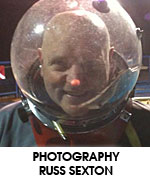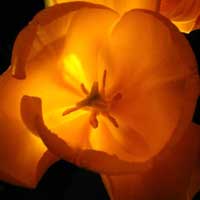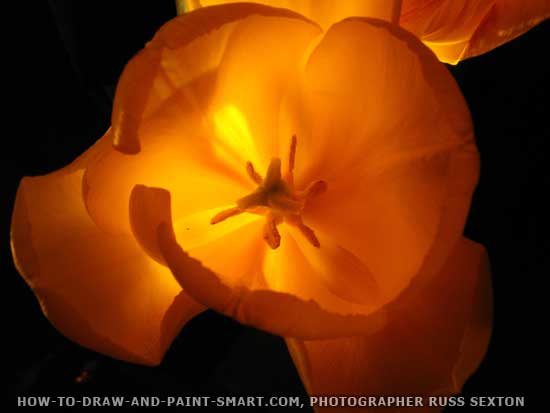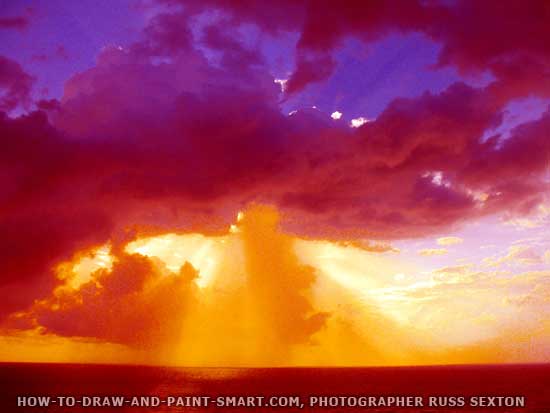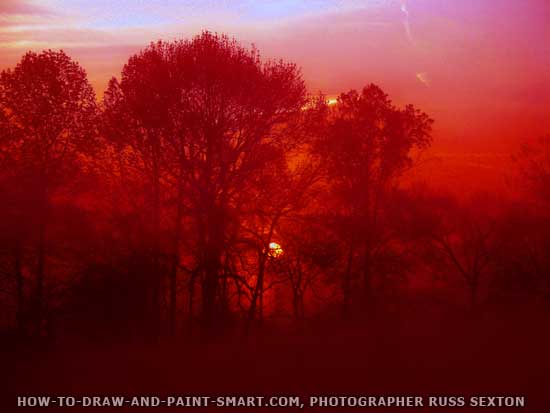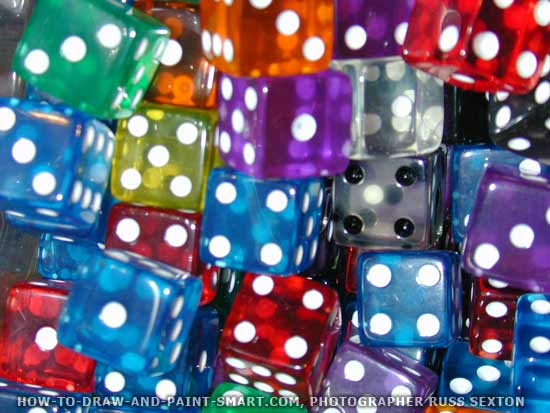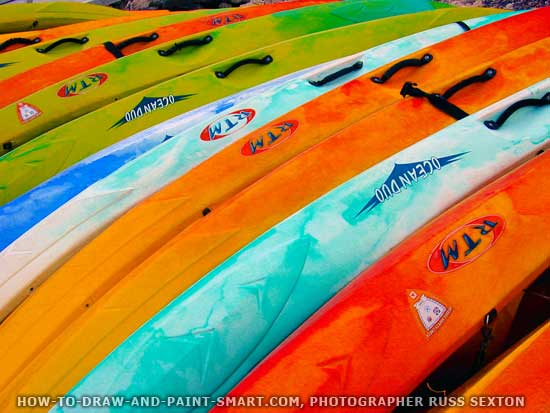Color in Photography
When taking photos, I use the highest level and number of colors that all of my equipment can support. This typically means at least a JPEG image at maximum capacity, and when I.m working in Photoshop I also save the psd file since it contains the entire original and the fitted colors. I love color in photgraphy and that is why a major portion of my photos are flowers. These by far are the most colorful things in nature, and it's a good thing. Bees and butterflies would never find a green flower in a green field of grass. Nature works these things out; all we need to do is capture the rhythm of the color and the insight it may bring. Color is a hard subject, it is easy to define the physics of color wavebands, but to define the composition of a picture using color is most challenging. Sometimes simple colors on black backgrounds create stunning effects. Let’s look at the tulip below.
Wow what a tulip. Using 2 million candle powers to back light the tulip produces a lumisaint quality. Is the picture about the tulip or is it color? I think it is about color. Color in Photography: Emotions Use your primary colors well, it is an eye catcher. I have noticed this over and over again at each show I give. Posters of a primary colors on black and sometimes on white can create a walkway through a room that leads viewrs right to the photograph. So, placement of your primary colors in a show can lead your guests across a room, past many interesting photos that they will also stop to see. Color in Photography: Natures Colors These pictures of color also are easy to create and manipulate in Adobe Photoshop. I think most photographers notice clouds first on a blue sky day. Why? Because it is a primary color. Many photo sites on the internet will have a section totally dedicated to clouds, flowers, oceans, etc. These are spaces of pure primary colors. Grab that camera, what is the most colorful thing next to you? This could the tacks, pin heads, golf tees, pencils, flowers, or the clouds against the blue sky above. Try a composition considering the colors, do they from a rhythm, a repeating sequence of color? Look close and study the color. But by far the most interesting sky color is created at sunset and sunrise. The reds and yellows of a sunset are intensive and the clouds can form a fabric of texture and interest. Let's looks at a sunset and a then a sunrise.
A rain storm at sea, Wow the blues, blacks, yellows and reds bleeding in magenta. This is my favorite sunset picture - to see the rain pouring from a thunderstorm with the sun defining the rain. Incredible! Another of my favorites is a sunrise picture taken in the fog of August on a very hot Alabama morning.
The fog became red with the sunrise and a feeling of the summer heat can be felt. Fog, rain, snow are great medium’s. The next time it rains, find a light ray shinning through, you will have award winning photo every time. To get great imagery, sometimes being an early riser makes the difference, but the sunsets are as spectacular so don’t worry. There is one everyday of the week. Color in Photography: Noticing Colorful Objects around you
Below is a photo from a time I was walking the beach and I noticed that a stand of kayaks created a great rhythm of color.
The kayaks were standing vertical, but I liked running the lines diagonally and cutting off the tips to create a more abstract concept. Color in photography is fun, it creates interest, grab that camera, start is something and try colors. Have fun, start snapping, and be happy. ~ Russ. |
Smart Links
Visit Photographer Russ Sexton's Flicker gallery
Return from Color in Photography to How to Draw and Paint Smart Home Page

